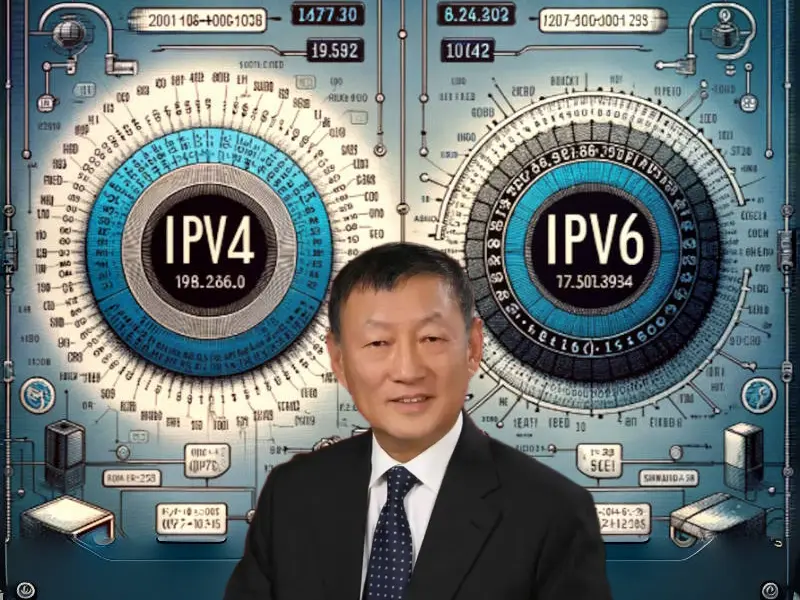- Emphasizing the issue of IPv4 address exhaustion, Professor Li Xing highlighted the significance of IPv6 as a 128-bit address solution.
- The interview offers insights into network management, the differences between IPv4 and IPv6, and the applications and prospects of IVI technology in the global transition.
Li Xing, a deputy director at the CERNET Network Center and a Professor at Tsinghua University’s Department of Electronic Engineering, shared insights in an exclusive interview with BTW during the Asia-Pacific Network Information Center (APNIC) event.
APNIC, the regional Internet address registry for the Asia-Pacific region, includes major enterprises like China Telecom, China Unicom, and China Mobile, along with smaller organizations under the China Internet Network Information Center (CNNIC).
Also read: What is an IPv4 address?
Highlighting the issue of IPv4 address exhaustion, Professor Li emphasized the necessity for IPv6, born as a 128-bit address solution to address the inadequacy of the 32-bit IPv4 addresses, totaling 4.3 billion.
The transition of campus networks from IPv4 to IPv6 was explained by Professor Li, citing the initial goal of achieving a seamless transition through Dual Stacks as somewhat idealistic. Consequently, technical teams focused on developing translators, with IVI Translation technology emerging as a transformative solution enabling communication between IPv4 and IPv6. Notably, this technology finds applications in popular devices like Apple and Android phones, supporting both IPv4 and IPv6.
Despite the slow progress in IPv6 promotion, Professor Li expressed optimism due to the resolution of communication challenges between IPv4 and IPv6 facilitated by IVI Translation technology. He anticipates the continued relevance of IVI even in the post-IPv4 era.
In summary, the interview provided insights into network management in the Asia-Pacific region, the distinctions between IPv4 and IPv6, and the applications and prospects of IVI technology.
Read the interview below:
Also read: Martin Winter, NetDEF: Open source software should be much more widely used
Think of going online as needing a house number, and the IP address serves as that house number.
Li Xing, Professor from Tsinghua University’s Department of Electronic Engineering
Interview with Professor Li Xing, expert in electronic engineering at Tsinghua University
Why did the campus network transition from IPv4 to IPv6?
Professor Li Xing: Think of going online as needing a house number, and the IP address serves as that house number. With the shortage of IPv4 addresses, the logical move is to switch to IPv6. This shift is happening worldwide, and there’s even a dedicated session in this meeting to discuss IPv6.
In fact, there’s no difference between them. It’s just an address?
Professor Li: Firstly, they both serve as IP addresses.
Secondly, and unfortunately, it’s not as adaptable as a phone number. Initially, China only had six-digit phone numbers, which later expanded to seven or eight digits, and now there are 11-digit mobile phone numbers. The convenience lies in the fact that you can dial using the longer or shorter formats. However, IP addresses don’t share the same flexibility. IPv4 and IPv6 are not interchangeable, causing complications.
Is there a switching mechanism among them?
Professor Li: As it turns out, when they initially designed IPv6, they were somewhat idealistic. The concept at the time was that since IPv4 addresses were running out, new machines would have both IPv4 and IPv6—a setup known as Dual Stack. So, if you were using IPv4, and I have both IPv4 and IPv6, I could communicate with you using IPv4. Similarly, if you were using IPv6, I could also match your protocol. The ultimate goal was to transition gradually as we replace machines over time, ultimately leading to a world dominated by IPv6.
Can IPv4 and IPv6 be bridged through a translator?
Professor Li: My expertise lies at the core of this translator. Our initial project, Ser Net, was centered around Chinese education research and relied on IPv4. However, during implementation, we faced a significant challenge.
Why? China has 320 million students, more than the population of the United States. IPv4 addresses were already halfway allocated. Allocating them all to China was impractical. Consequently, in 1997, one of my graduate students initiated the construction of China’s first IPv6 network.
Despite the success of IPv6, my goal was to ensure its seamless transition. Consequently, we set out to develop a translator, incorporating aspects like numbers, names, and protocols. Notably, this technology is now integrated into all Apple and Android phones.
So, it’s actually been successful?
Professor Li: IPv4 hasn’t been turned down yet, so it’s still a work in progress.
Eventually, it will be replaced, but the timeline is uncertain. Initially, the transition was expected to be completed before IPv4 addresses ran out, but that’s not the case now. However, thanks to this technique, it doesn’t matter because both IPv4 and IPv6 can work through a translator. Whether it takes another 10, 20, or 30 years, it doesn’t make a difference.
Have you heard about our technology? It’s called IVI. Wondering why it’s named IVI? Well, in Roman numerals, you subtract on the left and add on the right. In this case, ‘IVI’ stands for IPv4 on the left and IPv6 on the right—a name coined by my students. You can look up that term on Wikipedia for more information.
About IVI Translation
IVI Translation, denoting “4” (IV) and “6” (VI) in Roman numerals, is a stateless IPv4/IPv6 translation technique designed for seamless communication between hosts in different address families.
It serves as a replacement for SIIT (RFC 6145) and addresses various scenarios, allowing IPv6 and IPv4 networks to interact transparently. The technology’s name reflects its purpose, symbolizing the translation between IPv4 and IPv6.
Additionally, IVI Translation forms the foundation for stateful NAT64 and is related to stateless NAT464 (dIVI, dIVI-PD) technologies, contributing to the coexistence and transition between IPv4 and IPv6 networks.
This interview was initially conducted in Chinese and translated into English by Elma Yuan.

